Public revenues from extractive industries
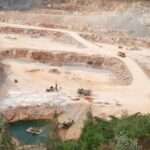
Extractive industries include mining and mineral sectors, natural gas and oil exploration, petroleum refineries, and quarrying for construction resources such as sand, stone, and gravel. Cambodia’s extractive resources have gone largely untapped, while these resources are geographically identifiable.The government considers extractive industries a potentially important ...
Journey of the Strategic Environmental Assessment (SEA) implementation

The 43rd Annual Conference of the International Association for Impact Assessment (IAIA) discussed the impact assessment for a just transformation. Strategic Environmental Assessment (SEA) is a systematic method for evaluating the possible effects of proposed policies, plans, and programs (PPPs). It provides a complete view ...
Volunteers and Interns
Try Bunheng, Royal University of Law and Economics (RULE)IT And Website Intern, July – October 2024Bunheng is an Information Technology student at the Royal University of Law and Economics (RULE), driven by a passion for technology and innovation. Currently interning as an IT and Website Intern ...
Hydropower dams
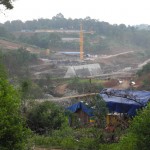
In 2003, a national sector review for hydropower was prepared by the Ministry for Industry, Mines and Energy (now Ministry of Mines and Energy) and the Cambodian National Mekong Committee (CNMC). This report identified 60 possible sites for hydropower development in Cambodia and estimated the ...
SDG 17 Partnerships for the goals
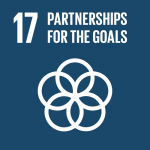
SDG 17 – “Strengthen the means of implementation and revitalize the global partnership for sustainable development” – is about bringing governments, civil society, the private sector and other actors together to help achieve the 2030 Agenda. There are 19 global targets and 25 indicators. The targets ...
Extractive industries licensing and payments
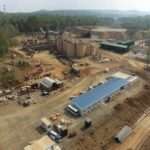
Overview of an industrial gold mine and refinery in Okvau. Photo taken from the Ministry of Mines and Energy’s Facebook Page, taken on 11 June 2021.Mineral resources are defined as “any substance, whether in solid, liquid or gaseous form, naturally originated by a geological process ...
Energy for transport

In Cambodia, petroleum is traditionally the main source of energy for transportation. The petroleum fuels used for transportation include gasoline, diesel, heavy fuel and fuel oil. ...
Budget
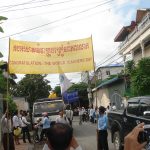
Cambodian Independent Teachers’ Association and Free Trade Union of Workers of the Kingdom of Cambodia celebrated the World Teacher Day from Cambodia. Photo by Education International, taken on 5 October 2009. Licensed under CC BY-NC 2.0Cambodia’s national budget determines state expenditures and revenues. It is ...
Sectoral consultation workshop on the enhancement of dataset and the profile page on Foreign Investment in Cambodia
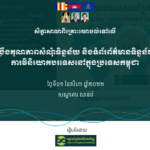
On 01 August 2022, Open Development Cambodia (ODC) conducted a Sectoral Consultation Workshop on the Enhancement of Dataset and the Profile Page on Foreign Investment in Cambodia at Sunway Hotel Phnom Penh. Thirty-two participants (11 females), including civil societies, researchers, indigenous NGOs, and university students ...
Red Cross
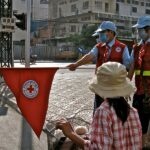
The Cambodia Red Cross (CRC) is the principal humanitarian society in Cambodia. The government has designated it as an auxiliary to public bodies offering humanitarian assistance. In addition to the national headquarters, the CRC has 25 branches.126 CRC was founded in 1955 and has worked ...
Extractive industries
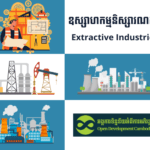
Extractive industries include mining and mineral sectors, natural gas and oil exploration, petroleum refineries, and quarrying for construction resources such as sand, stone, and gravel. Cambodia’s extractive resources have gone largely untapped, while these resources are geographically identifiable. French and Chinese geologists have been indicated ...
Disaster and emergency response funding
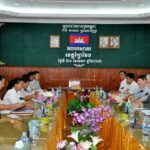
Cambodia has begun to integrate disaster and climate resilience goals into its national policies but implementation remains difficult. In the National Action Plan for Disaster Risk Reduction 2014–2018, the government prioritizes the target to: “build a resilient nation and local communities to pursue sustainable development.” ...
Mitigation
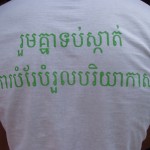
Together, fighting climate change. Photo by 350.org, taken on 12 October 2010. Licensed under CC BY-NC-SA 2.0.Clean Development MechanismThe Clean Development Mechanism (CDM), defined in Article 12 of the Kyoto Protocol, allows a country with an emission-reduction or emission-limitation commitment under the Kyoto Protocol to ...
Water pollution
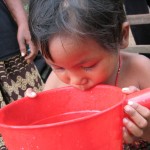
Young child drinks clean water in Cambodia. Photo by Cecilia Snyder, taken on 12 July 2003. Licensed under CC BY-NC-ND 2.0Water pollution can be defined in many different ways. Basically, it is the contamination of water when pollutants are discharged into water bodies without treatment ...
Primary school
Cambodia’s education system is structured into a 6+3+3 formula -students spend their first 6 years in primary school (grades 1–6), followed by 3 years in secondary school (grades 7–9) and 3 years in high school (grades 10–12) before sitting the diploma examination.338 Cambodian students are ...
Cambodia’s agriculture sector amid COVID-19
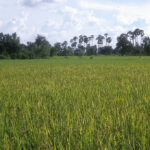
Agriculture has been considered as the backbone of the national economy. Of the total population, 76% were living in rural areas and agriculture provided 31.2% of total employment and contributed 20.7% to Gross Domestic Product (GDP) in 2019.390 However, the global pandemic caused by COVID-19 ...
Non-renewable energy production
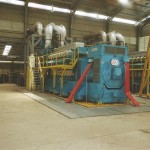
Non-renewable energy sources are chiefly fossil fuels such as coal, diesel, oil and gas. They provide most of Cambodia’s locally-produced electrical supply – in 2011 diesel and heavy fuel oil generators provided 89% of local electricity generation. ...
Forest protection

Deforestation has always been a problem in Cambodia since the 1970s, and it has aggravated inthe last decade. Some protected areas have been deforested. Between 2001 and 2018, Cambodia had lost 557,000 hectares (11.7%) of forest cover in protected areas.440 This loss has had an ...
Small and Medium Enterprises (SMEs) information toolkit

RationalIn 2018, the total number of registered Small and Medium Enterprises (SMEs) was 155,745. More than 90 percent of registered firms in Cambodia are SMEs. However, despite being vital to the socio-economy, 95 percent are not registered yet. By 2025, 80% and 95% of small and ...
Civil status
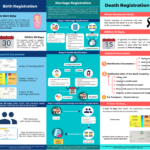
Cambodia has one of the youngest and fastest-growing populations in Southeast Asia, with a population of approximately 16 million in 2019.494 According to the World Bank, the country’s birth rate per 1,000 people decreased slightly, from 25.5 in 2010 to 22.4 in 2018.495 With economic growth ...



